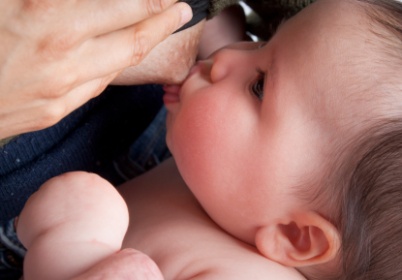 Breastfeeding is the normal and natural way of feeding babies. Every pregnant woman dreams of perfect bonding sessions with her baby. But for some, breastfeeding can be challenging. In Singapore as in many other developed countries, less than half of mothers still partially breastfeed after two months.
Breastfeeding is the normal and natural way of feeding babies. Every pregnant woman dreams of perfect bonding sessions with her baby. But for some, breastfeeding can be challenging. In Singapore as in many other developed countries, less than half of mothers still partially breastfeed after two months.
About one in six women may experience one or more episodes of mastitis, an inflammation of the breasts that can be accompanied by infection. Mastitis symptoms include pain, swelling, redness, and increased temperature of the breast.
On the internet, women have used words like “searing”, “knife-like” and “throbbing” to describe that pain. For others, it may be just an ache.
The good news is that early intervention can minimise the risk of problems and discomfort, eliminating the need to stop breastfeeding.
“Nursing mothers can receive safe antibiotics and painkillers to minimise discomfort. Stopping breastfeeding might create engorgement and worsen matters,” says Dr Yong Tze Tein, Senior Consultant at the Department of Obstetrics and Gynaecology, Singapore General Hospital, and President of the Association for Breastfeeding Advocacy (Singapore).
Related article: Will breastfeeding make my breasts sag?
Can mastitis be prevented?
Mastitis can have many causes, such as cracked nipples which facilitate the transmission of bacteria commonly present on an infant’s mouth. Prevention is better than cure.
· Breastfeed regularly, completely emptying the breast each time. Pump your breast if you’re separated from your baby, as engorged breasts can lead to mastitis.
· Feeding should be on demand. Look at your baby, not at the clock.
· Cracked or sore nipples can be caused by poor positioning or latching-on. Seek assistance early to get it right from the start.
· Build your resistance to infection by controlling any condition that affects your immune system, such as diabetes or anaemia.
· Get enough rest and eat properly. Do not be afraid to ask for help from friends and family members with your household responsibilities.
Related article: Breastfeeding tips for mums and dads
“Most women worry even before they start breastfeeding. It is important to be prepared, read or attend classes before your baby arrives. Start breastfeeding immediately after delivery, get the right latch and feed on demand. This will go a long way towards preventing mastitis. Otherwise, mastitis can be easily treated by antibiotics, painkillers and prevention of engorgement,” says Dr Yong.
The psychological aspect of breastfeeding
After the demands of work, insufficient milk supply is the second reason working Singaporean women quit breastfeeding, according to a 2001 HPB survey.
Breastfeeding forums are rife with accounts from mothers feeling inadequate because their milk doesn’t seem to cover their baby’s feeding needs.
“Insufficient breast milk is often a matter of perception and inadequate understanding of how breast milk is produced. No matter the feeding method, breast milk is produced. Continued supply is ensured by regular and frequent suckling at the breasts. In reality, very few mothers cannot produce enough milk”, says Dr. Yong.
Mixing breastfeeding with bottle-feeding will worsen poor milk supply. Why? A formula-fed baby will suckle less. With less perceived demand, the mother’s production decreases. “To ensure good supply, feed the baby on demand. Avoid unnecessary supplementation with formula or water,”says Dr. Yong.
Related article: FAQ on breastfeeding diet (what mums should eat)
Breastfeeding is the best way to feed your baby. In July 2011, breastfeeding was featured in Health Xchange’s “Ask the Specialists” Q&A session. See our experts’ answers to questions posted by the public.
Source: Health Xchange Editor, with expertise from the Obstetrics and Gynaecology Dept at singapore general hospital.






